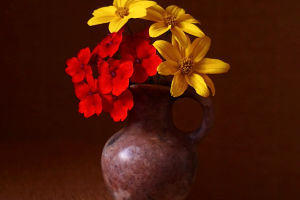Lykkers, have you ever been captivated by the delicate beauty of apple blossoms? Imagine walking through an orchard, surrounded by soft pink and white petals—what a perfect moment to savor nature's artistry!
Apple blossoms are not only a feast for the eyes but also a vital part of the apple tree's life cycle. These flowers herald the arrival of spring, attracting pollinators and setting the stage for delicious fruit later in the season.
Biology of Apple Blossoms
Apple blossoms are typically pink and white, growing in clusters of two to five flowers per cluster.
These beautiful blooms are usually the first sign of spring, emerging after the last frost, and typically bloom from late April to early May. Each flower consists of five petals and is rich in nectar, making them irresistible to bees and other pollinators.
After pollination, the flowers develop into apples, completing the life cycle of the apple tree.
Do you know about apple blossom? #flowers #appleblossom
Video by LOSI'S WORLD
Cultural Significance
In many cultures, apple blossoms symbolize beauty, love, and new beginnings. They have been celebrated in art, poetry, and folklore for centuries.
For instance, in Chinese culture, apple blossoms represent peace and harmony, often appearing in traditional paintings.
In the United States, the apple blossom is the state flower of Arkansas, embodying the arrival of spring and renewal.
Furthermore, the blossoms have inspired numerous festivals, where communities come together to celebrate the beauty of nature, enjoy local foods, and engage in various activities centered around apples.
How to Grow Apple Blossoms
Growing your own apple tree is a rewarding experience, and it all starts with selecting the right variety.
Choose a tree that suits your climate; some popular options include Honeycrisp and Granny Smith.
Plant your tree in a location with full sunlight and well-drained soil. Regular watering is essential, especially during the first year of growth.
To encourage healthy blooms, prune your apple tree in late winter or early spring, removing any dead or weak branches.
Be patient, as it may take a few years for your tree to produce flowers, but once it does, you'll be treated to a stunning display every spring!
Pollination and Fruit Production
Apple blossoms play a crucial role in fruit production, relying on bees and other pollinators to fertilize the flowers.
Without pollination, the flowers will not develop into fruit. To ensure your blossoms are adequately pollinated, consider planting more than one variety of apple trees nearby, as many apple trees require cross-pollination.
Additionally, creating a pollinator-friendly garden can attract bees and butterflies, enhancing the chances of successful pollination. Once pollinated, the blossoms will gradually wither, giving way to young apples. As the fruit develops, it's essential to monitor for pests and diseases to ensure a healthy harvest.
Apple blossoms are a beautiful reminder of nature's cycles and the importance of pollination. Whether you're enjoying their beauty in an orchard or growing your own tree, these delicate blooms bring joy and renewal each spring.


